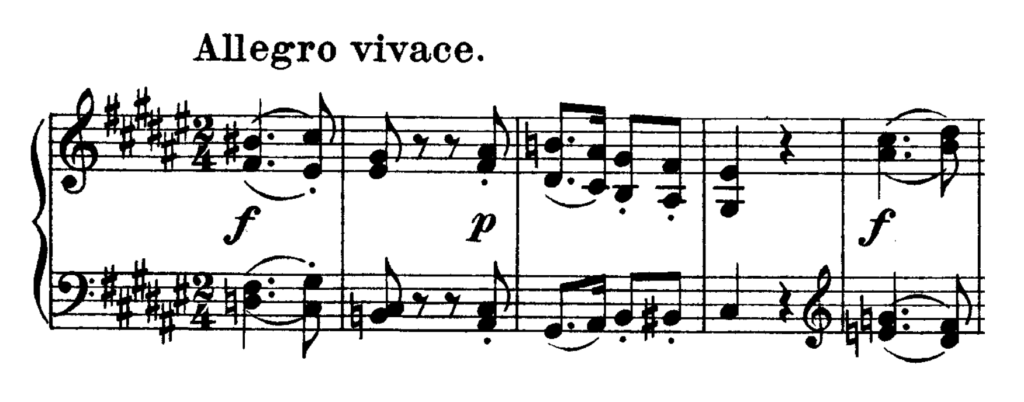Analysis
Contents
For the benefit of all pianists learning this work, we present to you a concise and easy to use analysis of Beethoven’s Piano Sonata No.24 in F# Major.
First Movement (Adagio Cantabile – Allegro Ma Non Troppo)
Form: Sonata Form. F# Major.
EXPOSITION:
Bars 1-4: Introduction. The Introduction is constructed upon tonic pedal point. It is not referred to again in the course of the movement.
Bars 5-9: First Subject in F sharp major (tonic). The first subject only consists of two phrases of two bars each; the latter one, Bars 7-9, being constructed upon tonic pedal point.
Bars 9-29: Connecting Episode. The connecting episode commences with a new figure; it continues in tonic key until Bar 18. By means of an interrupted cadence, Bars 18-19, it modulates to the key of D sharp minor, and then, Bar 21, to C sharp major, in which key it ends, Bar 29.
Bars 29-37: Second Subject in C sharp major.
Bars 37-39: Bars 37-39 lead, in the first instance, to the repetition of the exposition, and afterwards, with the addition of Bar 41 (omitting Bar 39), to the development.
Double bar and repeat.
DEVELOPMENT:
Bars 41-59: The development principally refers to the first subject, in the tonic minor key, and ends in the tonic major
RECAPITULATION:
Bars 59-63: First Subject in original key. The first subject re-appears unaltered.
Bars 63-90: Connecting Episode. The connecting episode resembles that in the exposition, extended and altered so as to end in F sharp major.
Bars 90-98: Second Subject in F sharp major (tonic). The second subject re-appears transposed into the key of the tonic.
Bars 98-End: Coda. The Coda is an extension of the bars at the end of the exposition; it contains reminiscences of the first subject. The development and the recapitulation are repeated.
Double bar and repeat from Bar 42.
Second Movement (Allegro Vivace)
Form: Rondo Form. F# Major.
FIRST PART:
Bars 1-20: First Subject in F sharp major (tonic). The first subject commences with the chord of the augmented sixth on the minor sixth of the scale. It is in two parts, Bars 1-12 and Bars 12-16. The second part is of quite a different character from the first; it is repeated, Bars 16-20.
Bars 20-22: Bars 20-22 modulate to C sharp major, the key of the following episode.
Bars 22-31: Episode. This episode is entirely constructed on one figure of two notes.
Bars 32-49: First Subject in original key. The first subject re-appears in its original key, the repetition of the second part being curtailed.
Bars 49-51: Bars 49-51 form a passage leading to the episode.
SECOND PART:
Bars 51-149: The second part commences with six bars resembling the first episode, the first of which is inverted. At Bar 57 a fresh episode is introduced, two bars in D sharp major, Bars 57-59, alternating with two bars in D sharp minor, Bars 59-61, also Bars 61-63 and 63-65. This episode eventually ends, Bar 74, on dominant seventh of C (natural) major, followed by another reference to the first episode, Bars 74-88. At Bars 89-104, the first subject re-appears in the key of B major, after which there occurs a passage leading to the repetition of Bars 51-58, slightly lengthened, with harmonic and melodic changes.
THIRD PART:
Bars 150-161: First Subject in original key.
Bars 161-End: Coda. The Coda begins with several bars (161-174) constructed upon Bar 11. After a short cadenza the movement closes with a variation (upon tonic pedal point) of the second part of the first subject.








